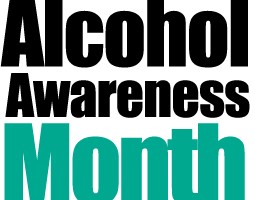
In Honor of Alcohol Awareness Month:
Talking to Youth About Substance Abuse
Deborah Hendren, CSAPC, Substance Abuse Prevention Manager
 With the prevalence of drug and alcohol use in the media, news, and entertainment, the need to provide education on the dangers of substance abuse and its effects on children has never been greater. Children and youth are much more resistant to these dangers and better able to make healthy choices about substance use when properly educated.
With the prevalence of drug and alcohol use in the media, news, and entertainment, the need to provide education on the dangers of substance abuse and its effects on children has never been greater. Children and youth are much more resistant to these dangers and better able to make healthy choices about substance use when properly educated.
Alcohol and drug use tends to begin during mid-to-late adolescence. The earlier the age at which someone starts drinking increases the risk that he or she will develop alcohol-related problems later in life. In contrast, a delay in drinking until the age of 21 greatly reduces the risk of developing alcohol-related problems. Various factors can contribute to underage drinking, from insecurity to a desire for social acceptance. While the percentage of teenagers who drink alcohol is slowly declining, numbers are still quite high. Nearly 30 percent of adolescents report drinking by 8th grade, and 54 percent report being drunk at least once by 12th grade.
Parents are the most effective force in preventing and reducing adolescent-risky behaviors and helping the nation’s youth lead healthier lives. Research shows that kids who learn about the dangers of alcohol and drugs at home are up to 50 percent less likely to use these substances than kids who don’t learn about such dangers from their parents. Parents influence whether and when adolescents begin drinking. Family policies about adolescent drinking in the home and the way parents themselves drink are important.
So, what can parents do to help minimize the likelihood that their adolescent will choose to drink and that such drinking, if it does occur, will become problematic? The U.S. Department of Health and Human Services suggests the following:
- Talk early and often, in developmentally appropriate ways, with children and teens about your concerns—and their’s—regarding alcohol. Adolescents who know their parents’ opinions about drinking are more likely to fall in line with their parents’ expectations.
- Establish policies early on. Be consistent in setting expectations. Enforce the rules.
Many adolescents feel that parents should have a say in decisions about drinking, and they maintain this deference to parental authority as long as they perceive the messages to be legitimate. - Work with other parents to monitor where kids are gathering and what they are doing.
Being involved in the lives of adolescents is key to keeping them safe. With open and respectful communication and explanations of boundaries and expectations, parents can influence their children’s health. This is especially important in young people’s decisions regarding whether and how to drink—decisions that can have lifelong consequences.
Ultimately, there are many influences on whether an adolescent begins to drink alcohol at a young age including: a child’s home life and whether parents have talked with their children about rules for alcohol use; whether an adolescent’s peers drink alcohol; and the influence of media, such as movies and television that depict alcohol use, music that includes lyrics about alcohol use, and advertisements for different brands of alcohol. Reducing underage drinking is critical to securing a healthy future for America’s youth and requires a cooperative effort from parents, schools, community organizations, business leaders, government agencies, the entertainment industry, alcohol manufacturers/retailers and young people themselves.
“Underage drinking is a complex issue,” says Andrew Pucher, President and Chief Executive Officer of NCADD, “one that can only be solved through a sustained and cooperative effort. As a nation, we need to wake up to the reality that for some, alcoholism and addiction develop at a young age and that intervention, treatment, and recovery support are essential for them and their families.” Says Pucher, “We can’t afford to wait any longer.”
Source: National Council on Alcoholism and Drug Dependence, Inc.
